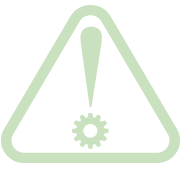Meters
Energy Meters are installed on homes to allow the energy provider to know how much energy was used and produce a bill for the correct amount. Most utilities send someone to the home monthly to read the meter. Systems that automatically read the meter and send the information are increasing in popularity because, although the metering and communication equipment may be more expensive, it saves on the cost of sending someone on-site to read the meter.
For homeowners, reading an energy meter is a good way to become familiar with how much energy a home uses. For example, when trying to decide between two energy "alternatives", like:
"Should I close the windows and run the air conditioner around-the-clock?" or
"Should I open the house at night and air condition only during the hottest portion of the day?"
...reading the electric meter can provide the answer.
Begin the experiment by reading the meter and trying it one way for a few days, and reading the meter again. Then, try it the other way for the same time period and read the meter again. If most other variables were the same during the time periods (e.g., weather and use of the home), one should have the answer to which is the most economical.
 Another way to use meter reading is to see how much energy a certain appliance is using. Suppose you wanted to know how much energy your refrigerator uses and the nameplate data telling its wattage is in a hard-to-read place. You could turn off everything else in the house, then take two meter readings an hour apart to find out how many kilowatts it uses in one hour. Or do it for half an hour and double the reading to scale it up to a full hour, or even 15 minutes and multiply the reading by 4.
Another way to use meter reading is to see how much energy a certain appliance is using. Suppose you wanted to know how much energy your refrigerator uses and the nameplate data telling its wattage is in a hard-to-read place. You could turn off everything else in the house, then take two meter readings an hour apart to find out how many kilowatts it uses in one hour. Or do it for half an hour and double the reading to scale it up to a full hour, or even 15 minutes and multiply the reading by 4.
|
|
||







